It is always a pleasure to hear from our good friend, Yazaki-san, and this time he is back to tell us about his continuing adventures with his vintage Marantz Model 7 preamplifier from the Golden Age of audio, and the discoveries he's made during those adventures.
If you are just getting started reading Yazaki-san's articles, I think you'll find them to be full of fascinating insights on how to achieve "real sound", not only with the vintage Marantz Model 7 preamplifier, but with insights that are broadly applicable to your own audio systems as you pursue "real sound" for yourself.
Here's an index to Yazaki-san's earlier articles for your reading pleasure and reference:
- “My Adventure With My Old Marantz Model 7” Part 1, May 2017 (HERE).
- “My Adventure With My Old Marantz Model 7” Part 2, May 2017 (HERE).
- “My Adventure With My Old Marantz Model 7” Part 3, June 2017 (HERE).
- “My Adventure With My Old Marantz Model 7” Part 4, June 2017 (HERE).
- “My Adventure With My Old Marantz Model 7” Part 5, June 2017 (HERE).
- “My Adventure With My Old Marantz Model 7” Part 6, July 2017 (HERE).
- “My Adventure With My Old Marantz Model 7” Part 7, April 2018 (HERE).
- “My Adventure With My Old Marantz Model 7” Part 8, November 2019 (HERE).
Many thanks to Yazaki-san for sharing so many insights with us in his exceptional series of articles!
Enjoy!
My Latest Adventure with My Old Marantz Model 7, Part 9
Dedicated to All of the Model 7’s Many Devotees
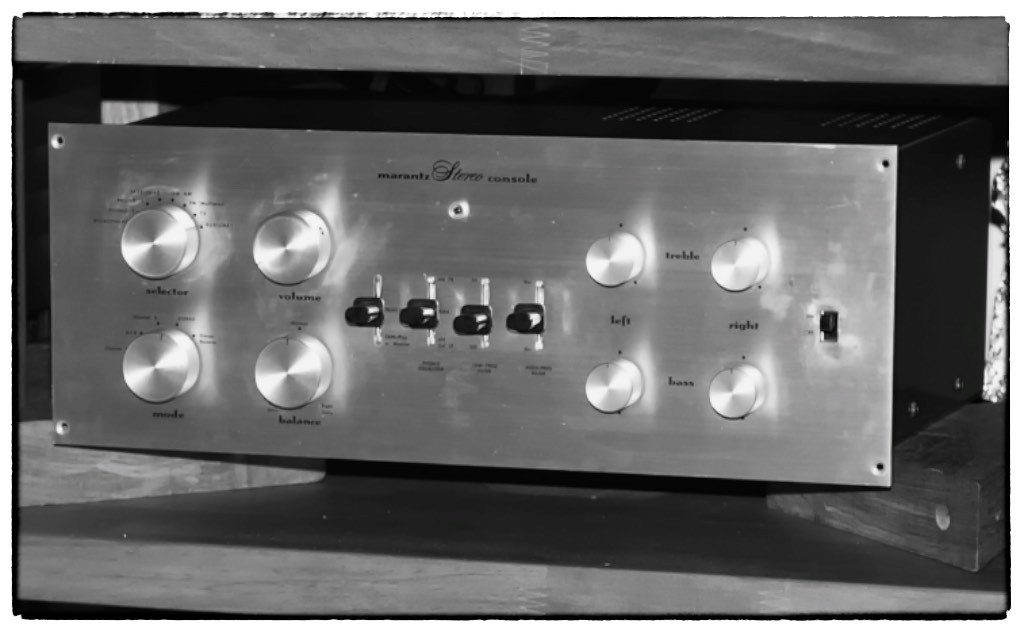
Yazaki-san's vintage Marantz 7k preamplifier.
"The frog in the well knows nothing of the great ocean."
In my long professional life as an audio engineer, and in this hobby world of audio, I have always asked myself about this proverb as a cautionary lesson.

Zhuang Zhou. Public domain image courtesy of Wikipedia.
It is an old Japanese proverb, "The frog in the well knows nothing of the great ocean," attributed to Zhuang Zhou, a revered ancient Chinese philosopher from the 4th century BC (c. 369 BC), in the tradition of Confucius (c. 551 BC), who offered many wisdom teachings and insights into virtue.
Of course, the meaning of this proverb is "to be aware of the limitations of one's own experience."
In other words, "the frog in the well thinks that the world in the well is everything, and does not even know that there is a great ocean."
In the hobby of audio, this ancient proverb may end up in the judgment of one's own taste, or likes and dislikes, in the area of individual sensibility, "the frog in the well," but I have recognized that there needs to be some generality and universality in recognizing "that there is a great ocean."
This universality will also include physical or technical proof, or evidence, as it has in my long involvement in the world of audio and video as a professional engineer.
Certainly, when I was young, I had worked hard to reduce the wow and flutter on cassette decks. Fortunately enough, the result finally led to the worldwide highest evaluation of the Pioneer CT-95 in 1992 to 1993, where this evidence of improvement in the hard data of wow and flutter definitely resulted in improved sound quality.
However, as you all know, in the audio world, there are very few cases in which measurement results are directly related to sound quality.
Both the distortion factor and the frequency characteristics of the amplifier are merely static characteristics and do not express the dynamic characteristics related to human hearing.
Of course, I am not the one who denies the pursuit and improvement of these static characteristics, but it is also very important to clearly grasp the limits.
In a situation where it is difficult to develop a measurement method related to this dynamic characteristic, the judgment of the sound quality of audio equipment much depends on the hearing sense of the person who enjoys the music and the sound reproduced by the audio equipment.
So, I've told myself that my ability to sense music and sound must always be objective, without being self-absorbed or self-involved, that is, without being "the frog in the well".
Thankfully, it's been more than five years since I started our close friendship with Jeff-san, and at that time I truly confirmed that there are people overseas who have the same type of feeling as my audio-hearing sense.
Yes, Jeff-san called me a kindred spirit from the beginning.
To tell the truth, I have felt that I am rather a heretic among the so-called high-end audiophiles or audio publishing in Japan.
If anything, I think Japanese enthusiasts are more likely to try to understand audio or music with their heads rather than their bodies, but I'm more likely to perceive music through the simple reactions of my ears and body.
Perhaps it comes from my original experience, the devotion to Elvis Presley's songs in middle school and high school days.
Anyways, I was able to jump out of the narrow well of Japan and made good friends, like Jeff-san, Alan-san, and Roy-san, in the United States, far beyond the Pacific Ocean, which I had been long wishing for.
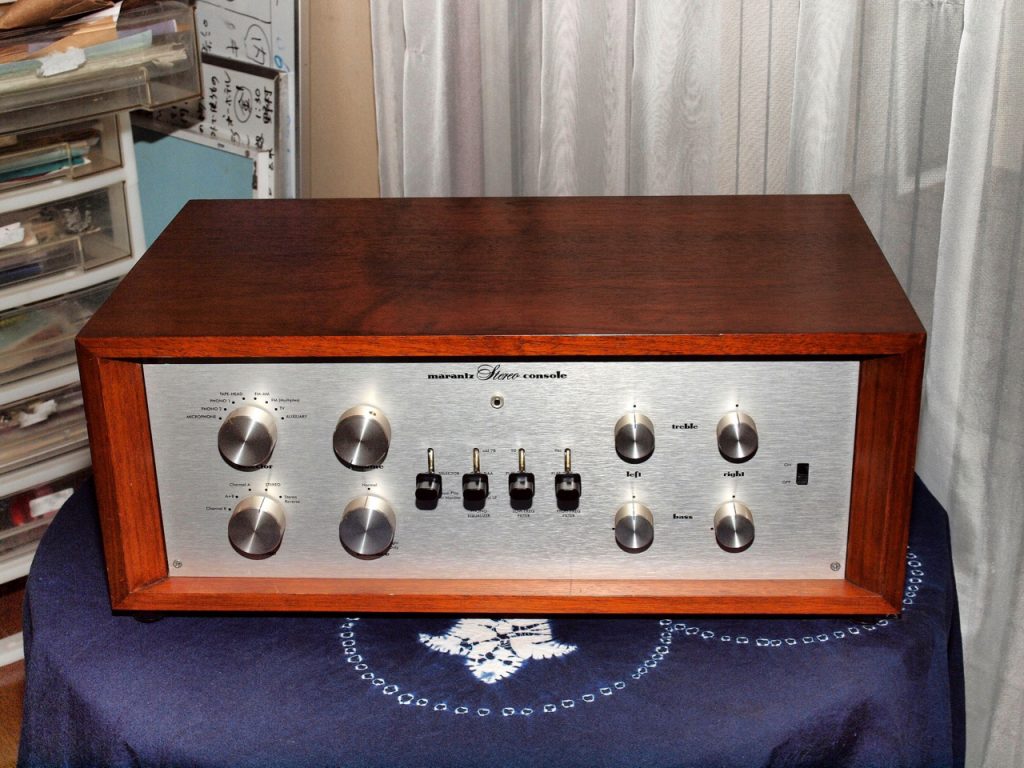
Roy-san's Marantz Model 7 Replica that was modified by Yazaki-san.
As I recently learned, it is said that the following words were added to Zhuang Zhou's proverb by the Japanese in later years, that is, “The frog in the well knows nothing of the great ocean, but he knows well the blueness of the sky,” which means something like, "You can get deeper knowledge by digging deeper into what you are interested in."
What hopeful words these are!
I've been pursuing a “Capacitor Adventure”, especially for the last decade or so, which of course, was simply a result of my excited interests in audio.
In this adventure, I have not only pursued capacitors that are audibly superior, but at the same time I have continued to consider the correlation between the unknown audible characteristics of human hearing and the physical characteristics of capacitors.
Fortunately, these adventures have resulted in the Arizona Red, Blue, Green capacitors, and the Ultimate Ruby Mica capacitors.
As I said before in Part 8, I would like to express my gratitude to my close friends in Japan, Nishikawa-san, Kajiwara-san, and Kato-san, for all their help, and in particular for our hearing evaluations of the Ultimate Ruby Mica capacitor.
Phono EQ Improvement with Ultimate Ruby Mica Capacitor
When I wrote Part 8, I didn't hesitate to change the constants of the tone amp that involved changing the low frequency time constant, C62; from 0.01 MFD to 0.016 MFD and C91; from 0.01 MFD to 0.016 MFD, which was the theme of Part 8.
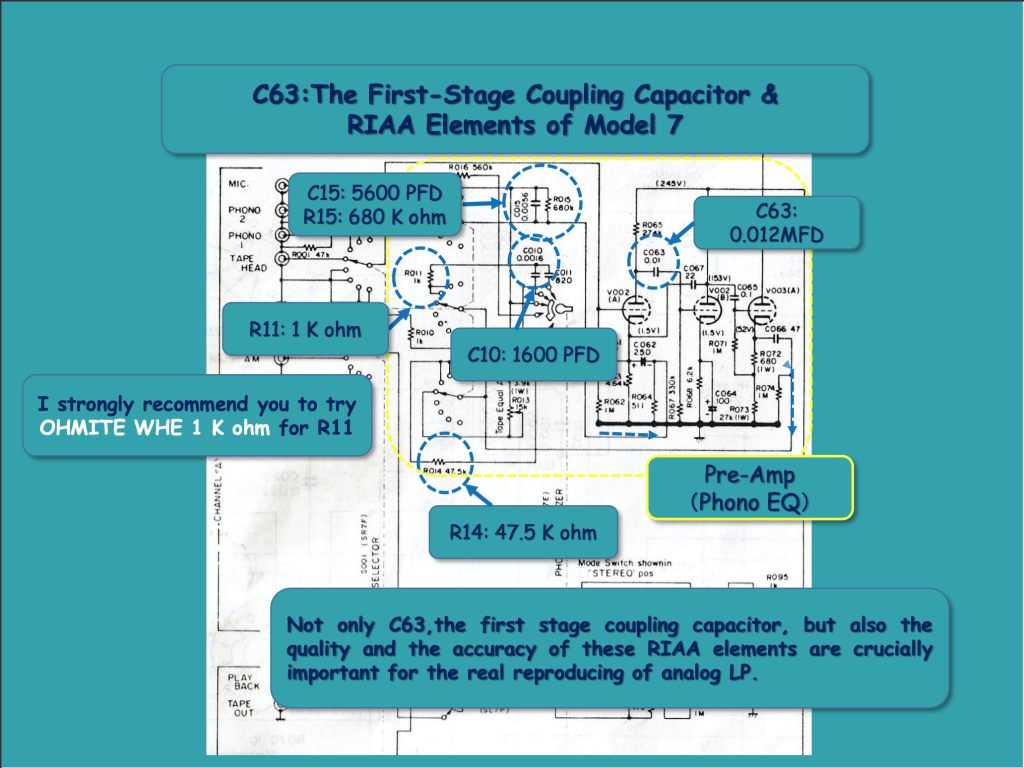
But for C63; 0.01 MFD, the first stage coupling capacitor of the phono EQ, I didn’t try replacing the capacitor.
This is because I stubbornly considered the mechanical arm resonance with the compliance of cartridge, and the subsonic filter to avoid it, as a necessary condition for enjoying analog LPs.
I wrote as follows, "Needless to say, but I’d like to point out the unavoidable "arm resonance" at around 10 Hz, which is decided by the total mass, composed of the effective mass of tone arm and the cartridge, including the head shell, and also the compliance of the cartridge. ... Alan-san's Model 7’s subsonic filter seems to have already included the filter characteristic proposed by the IEC (International Electrotechnical Commission) in 1963. In any case, not only this arm resonance, but also the rotational noise of the turntable and the low-range mechanical vibration caused by the motor rotation, are reflected in the output signal of the cartridge. Therefore, such a subsonic filter would have been indispensable."
Around March of this year, when the global epidemic of this coronavirus was about to begin, the following thoughts suddenly came to my mind.
One was about the mechanical resonance, but I thought that resonance would not occur unless there was a vibration source, just because only the resonance frequency was there.
Certainly, the warp of the disc can be a vibration source. However, its frequency is an integral multiple of about 0.5 Hz, which is far from the ~ 10 Hz of the arm resonance.
Also, the big vibration source of the turntable is the motor, but the magnitude of the vibration of the AC induction motor in old times would have been much larger than that of a modern high-end turntable system.
Given that, there is no doubt about the necessity of the subsonic filter, but I came up with the idea that it would be better to set the cutoff frequency to a slightly lower frequency.
Another idea was about the Bumble Bee 0.01 MFD capacitor used at C63 in the original Marantz 7 (± 10% tolerance). Even if the original Bumble Bee had survived for so long, its capacitance would be close to the upper limit, and even if it was within the allowable value at 100Hz, the value would be exceeded at 1 KHz, in most cases. By doing so, even with the original Model 7, for the C63, 0.11 to 0.12 MFD could be actually possible at 100 Hz, I thought.
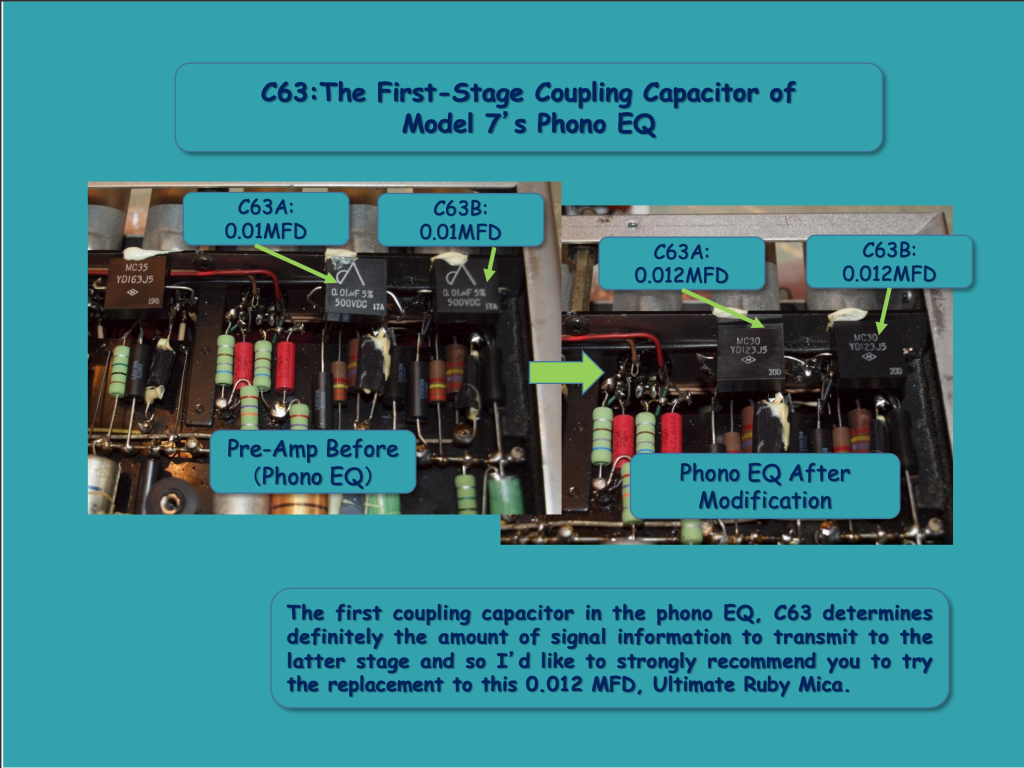
So, this April, I relied on my intuition to change the C63 constant from 0.010 MFD to 0.012 MFD, and using a prototype of the Ultimate Ruby Mica capacitor, I replaced the 0.01 MFD SPEC MC-DA mica capacitor in my Model 7 K with a 0.012 MFD Ultimate Ruby Mica capacitor.
You might say that these mica capacitors will also have tolerances. However, the accuracy of the capacitance value of the mica capacitor is beyond comparison, and even if it is expressed as ± 5%, the accuracy is actually equal to or lower than 1%, or at most 2% or less.
Moreover, it can be said that there is no frequency dependence of the capacitance value, and also the dissipation factor, tan δ, which is the most important characteristic of the capacitor, has a remarkable characteristic of -90.0 degrees at 100 Hz, 1 KHz, 10 KHz, and 100 KHz.
Well, the change from 0.01 MFD to 0.012 MFD of C63 lowers the calculated cutoff frequency of the first stage from 48.2 Hz to 40.2 Hz.
However, the actual RIAA deviation characteristic can be considered to be the sum of the low-frequency boost or turn-over by the RIAA EQ, designed into the signature K-K negative-feedback circuitry of the Model 7 and this low-frequency cut filter.
Of course, the most important matter for us would be how did this modification change what we heard?
This time, I’d like to share with you my true kindred spirit, Nishikawa-san’s first impression from one day in April.
“Compared to the sound before, I heard the sound coming out had another dimension to it. It's difficult to describe in words, but the sound field expands much further, and I can hear clearly as if I have a bird's-eye view of a standing position in the hall, of each and every voice and instrument. In addition, the sound pops out from the absolute quiet, and the texture and smoothness of the sound emerges as if the veil was fully removed. The voice of Elly Ameling, in "An die Musik", which I’ve often listened to, was so gentle, but powerful, and stress-free. Next, I played the Julie London’s LP, “Love On The Rocks”, which I borrowed from Yazaki-san, but the voice and the instrument came out more vividly than before, and surely she talked quietly from near”.
My good friend, Kajiwara-san, was also much excited by the result of this modification on his original Model 7, and he said to me that this improvement deepened his conviction that the Model 7's phono EQ would be the only way to reach and bring out the full potential of the excellent MM cartridge, the Shure V15 Type 3 with VN35MR stylus, which is also firmly our common view.
At the same moment, we also shared the view that the decades of decline of regard for MM cartridges might be closely related to the disappearance of such excellent Model 7 tube phono EQs on the market.
This is because in order to receive the high output impedance of the MM cartridge, which is around 50 K ohm, without loss, the extraordinary high input impedance, and also the high anode voltage, would be required.
Otherwise, I think that the high output of the MM cartridge of several millivolts, and the peak of dynamic range, cannot be realized.
Well, if I go back to the main subject, I analyzed the success of this improvement as follows.
First and foremost, by lowering the cutoff frequency, the amount of low-frequency information has increased, and even the minute signals of the recording environment that express the sound field can be reproduced.
I also think that the large amount of transmitted information, that is, the extremely small loss of signal information, as a favorable characteristic of Ultimate Ruby Mica itself surely supports the above-mentioned Nishikawa-san’s positive impressions.
I'd like to explain what I mean about Ultimate Ruby Mica capacitor’s large amount of transmitted information.
I had reported about the supreme quality of Ohmite WH wire wound resistor in Part 6:
“Richer contrast could bring us some kind of excitement when we see these pictures. A sharp and clear focus for the subject of is an important factor for creating impressive photographs, just as a clear-cut sound image is for creating Real-Sound, I suppose. When I think of the sound of the Ohmite WH/WN resistor series, which came out just about 6 months ago, I am reminded of the very rich color contrast and sharp focus of my very old lens, Contax Sonnar T* 85mm/f 2.8 made in West Germany by Zeiss.”
It might be doubtful to compare the sound quality of a capacitor to that of a resistor, but in my hearing experiences so far, the parts that boast truly excellent and extraordinary sound quality would have the similar characteristics, such as the rich tonal contrast, and the sharp focus of the sound. Of course, improved tonal balance over the entire range would be added, I believe.
Also, regarding the image quality of video equipment, the wide dynamic range of its brightness is very important. It can be said that the depth of black subduction affects the reality of the image.
If I compare it to the world of sound, it might be equivalent to the silence in music. In other words, the depth of this silence may give a sense of dynamism to music playback, and make it more realistic and enjoyable, I feel.
As Nishikawa-san's impression shows, “the absolute quiet” would also be part of the wonderful charm and beauty of the Ultimate Ruby Mica capacitor.
Anyways, the first coupling capacitor in the phono EQ, C63, determines the amount of signal information to transmit to the latter stage, and so I’d like to strongly recommend you to try replacing C63 with the 0.012 MFD Ultimate Ruby Mica capacitor.
There is the one more reason about my recommendation, especially for enthusiasts of the original Model 7, because that in the two original Model 7s I've seen so far, the Sprague Bumble Bee, the C63 and the tone amp’s C82, were in the same state of failure without exception.
The reason is that these capacitors are soldered directly to the pins of the sockets of the first stage plate and the second stage grid of 12AX7 (ECC83), and it can be said that the heat over many years caused this voltage failure. Of course, this poor voltage will lead to not only irregular noise generation, but also, it could apply an excessive voltage and leak current to the grid, which may damage the valuable vacuum tube.
Well, as I already described the RIAA elements of Model 7 in Part 7, needless to say that the accurate RIAA curve or characteristics are an essential condition for bringing out proper analog LP playback.
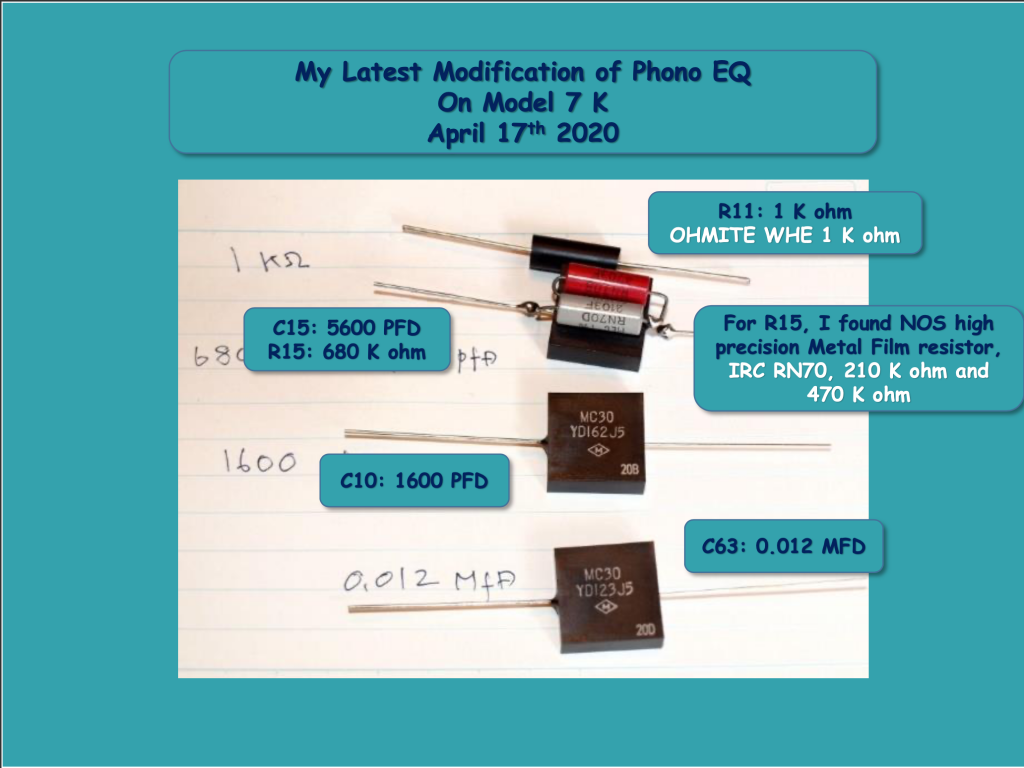
At the same time, I also made prototype of these RIAA elements by the production method of Ultimate Ruby Mica capacitor, C10; 1600 PFD and C15; 5600 PFD.
The results were so remarkable that I’d also like to recommend the devotees of Model 7 to try them.
Also, if you are interested in the replacement to the capacitors, C63; 0.012 MFD, C82; 0.016 MFD, C91; 0.016 MFD, C10; 1600 PFD and C15; 5600 PFD, (about C82 and C91, please refer to Part 8).

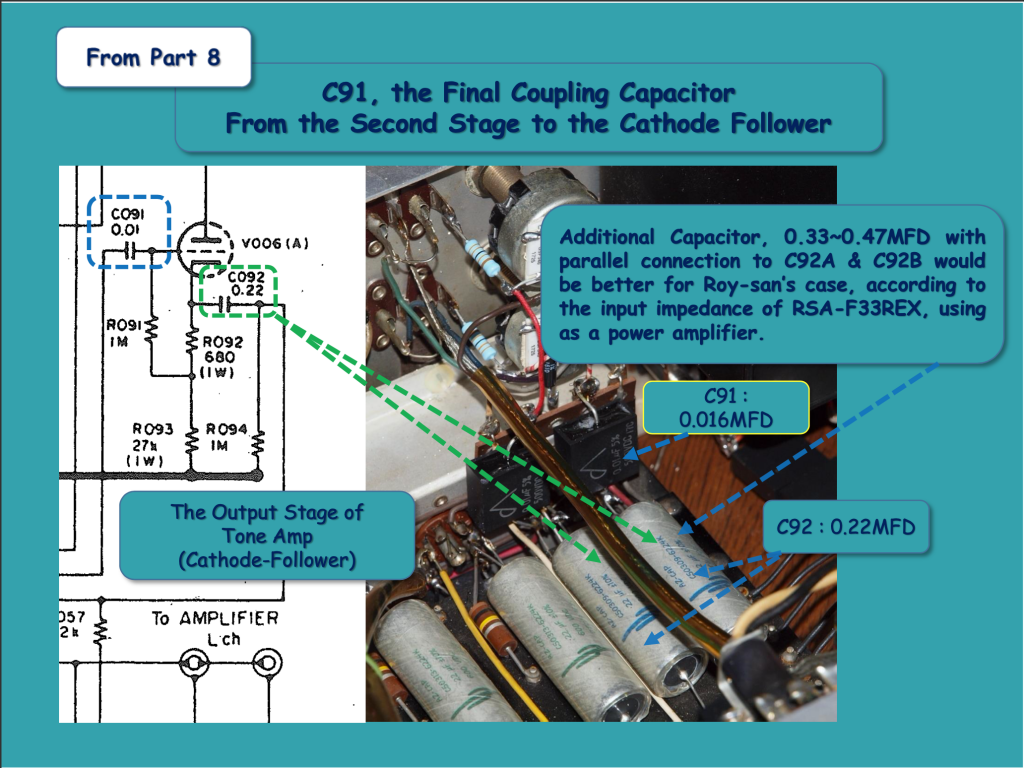
I’d like to offer this kit of Ultimate Ruby Mica capacitors for both channels at a reasonable price, as much as possible, to the readers of Jeff’s Place.
Please feel free to contact me by e-mail at Shirokazu Yazaki<[email protected]> if you are interested.
I truly hope my kindred spirits will enjoy experiencing a part of the “Real-Sound” that I have been looking for in my adventures with my old Marantz Model 7.
Anyways, thank you again for reading about my very personal experiences with my old Marantz Model 7!
Shirokazu Yazaki
Wow! Part 9 is another great article, and so illuminating to read!
Thank you so much, Yazaki-san, for taking the time to write and share with us about your adventures and discoveries with your vintage Marantz Model 7 preamplifier, and for making your discoveries so easily accessible to us!
Yazaki-san is indeed a kindred spirit with many of us around the world.
Yazaki-san has been a tremendously positive influence on my enjoyment of the audio arts, encouraging me to explore capacitor and resistor adventures, the charms of vintage Altec loudspeakers, and by introducing me to the "real sound" of tinned-copper interconnects and speaker cables, which all have brought much joy into my life. Thank you, Yazaki-san!
As always, thanks for stopping by, and may the tone be with you!








































